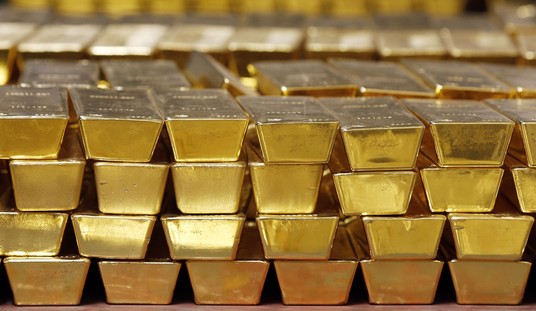The Chicken Littles predicting economic apocalypse because of President Donald Trump’s tariff strategy have been unusually quiet of late. Remember those early Spring days when we all were reliably assured that the sky was falling? The media and globalists from both parties have since moved to other panics, but we won't forget.
Columbia University economics professor Joseph Stiglitz insisted that “virtually all economists think that the impact of the tariffs will be very bad for America and for the world.” Mark Zandi, Chief Economist at Moody’s Analytics, predicted a 40% chance of a recession in 2025 due solely to Trump’s tariffs. Even billionaire investor Bill Ackman, a Trump supporter, predicted an “economic nuclear winter” that could lead to a global recession.
Those are just the tip of the critical iceberg. Stiglitz was right, at least on one point. Other than a tiny minority, the ‘expert class’ all agreed we were toast. We were supposed to witness sky-high inflation, a crashing economy, massive product shortages, and trading partners moving elsewhere. Instead, we’ve seen stable inflation rates, solid GDP growth, low unemployment, no product shortages to speak of, and countries on their knees begging Trump to cut a deal. Is everything rolling on all cylinders yet? No, but things aren’t nearly as bad as what critics were clearly hoping for.
That transatlantic trade war that Trump’s enemies were anticipating? Thanks to a massive deal with the European Union last week, they’ll have to wait. Turns out, contrary to the Chicken Littles, they need us more than we need them. Why else would the E.U. agree to hundreds of billions in economic investments and zero tariffs on U.S. goods in exchange for a flat 15% tariff? Thanks to Trump’s negotiating skills, that number actually seems like a pretty good deal compared to the 30% they WERE facing. Hell, even The New York Times is calling it a “big win.”
That too is just the tip of the iceberg, because lots of other places also need us more than we need them. Japan lowered its tariffs and opened its markets in exchange for a 15% tariff on goods brought into the U.S. The Philippines eliminated all tariffs on U.S. goods in exchange for a 19% tariff on its exports. The United Kingdom reduced tariffs on cars, steel, and other U.S. imports in exchange for a 10% baseline tariff on exports. Even trade tensions with China, thought to be irreparable, were eased by a May 2025 temporary deal that addressed trade imbalances and set a 30% U.S. tariff on Chinese goods and a 10% Chinese tariff on U.S. goods. Look for more good news on that front, as well as America-focused future deals with India, Mexico, Canada, and many more. I don’t know about you, but I’m not tired of winning yet.
Recommended
The world is learning that the United States is no longer an economic pushover, and it’s been a long time coming. All it took was a leader with a desire to wield the ‘big stick’ of economic power in America instead of Globalist interests. Has Trump been perfect here? No, but all in all, he’s been pretty darn solid. That initial tariff rollout seemed, at least on first impression, haphazard and clumsy, but in retrospect, it could have been just the kind of disruptive upending the world needed to realize they had better come to the table and play or Trump really would bring the hammer down.
Even beyond the trade deals finalized and in the works, the results speak for themselves. June saw our first trade surplus since June 2017, with $27 billion more in receipts than outlays. That number sat at -$71 billion in June 2024. And tariff revenues, already more than anticipated, will also have a measurable impact on the country’s balance sheet. The Congressional Budget Office has estimated that Trump’s tariffs could reduce primary deficits by $2.5 trillion over the next decade.
Even with the positive developments we’re already seeing, it will admittedly take some time to see some of the best results, particularly as companies locate facilities in America to avoid the tariffs applied to offshoring. Sure, some goods will cost more, but over the long haul, wages and opportunities here in our country will rise. Think of it as building a house on a foundation of bedrock instead of quicksand.
We’ve been gradually discovering the price for building our economy on quicksand. As the great Pat Buchanan wrote in 2018 while excoriating Sens Lindsey Graham and Jeff Flake for kvetching about Trump’s plan to tariff aluminum and steel (it’s a great column, you should read it and everything else you can get your hands on by that legend): “Since Bush I, we have run $12 trillion in trade deficits, and, in the first decade in this century, we lost 55,000 factories and 6,000,000 manufacturing jobs.”
It’s undeniably refreshing, especially after years, nay decades of leadership that seemed more than content to consistently put America last when it came to international trade. It’s hard to imagine why, especially from the vantage point of getting to see the actual benefits of an America First trade policy. Maybe they viewed trade imbalances as some sort of reparations for America’s sins across the globe, maybe they truly hated middle and lower class U.S. workers and relished the prospect of them continually losing out to globalism, maybe they genuinely felt like cheap goods were worth the horrific long-term price, or maybe they just didn’t want to hurt some foreign leader’s feelings. It’s hard to say, but one thing is certain: President Trump has proven that a focus on ‘fair,’ and not just ‘free,’ trade is the right strategy to build and maintain an economic powerhouse for decades to come.


